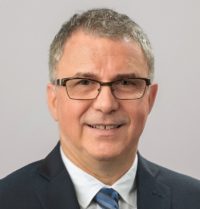March 9, 2023
Don’t Leave the IRS a Tip: The Importance of Tax Planning and Reviewing Your Return

By Chris Palabe, CFS®, AIF®
Are you tired of the yearly dread of tax season? What if we told you there’s a way to retain more of your hard-earned money and keep the IRS away from it? It’s time to stop ignoring taxes for the rest of the year and start playing the game to win. With a well-planned and ongoing tax strategy, you can reduce your tax bill and maximize your wealth.
Our tips can guide you through the rules of tax law and help you come out on top. Don’t miss out on this opportunity to take control of your finances and keep more money in your pocket.
Build a Tax-Efficient Retirement Plan
When working with your financial advisor, retirement planning will often be a key point of conversation. By stress-testing your plan, you can quickly see if your current retirement accounts, savings rates, and other assets will be adequate for the retirement lifestyle you desire.
A direct way to reduce your tax bill is to contribute money into tax-deferred savings accounts, such as a 401(k) or IRA. But, in order to maximize your savings, you will need to determine both your current cash flow needs and your ideal retirement income. A proper financial plan will look at both factors and determine the best way to use your tax-deferred savings accounts to save you money both now and in the future.
For example, a $50,000 withdrawal from a Roth IRA will have a wildly different tax impact than that same distribution from a traditional IRA. Creating a tax plan can help you strategically withdraw from your various retirement accounts and reduce your tax liability.
Contribute to Your Health Savings Account
Health savings accounts (HSAs) offer triple the tax savings. This may sound too good to be true, but HSAs have no federal income tax, no state or local taxes, and no Federal Insurance Contribution Act (FICA) taxes. If you are eligible for an HSA, your money will be tax-deferred and can be withdrawn tax-free to pay for medical expenses.
Because HSA account balances roll over from year to year, by contributing to the limit each year, you can build up quite a nest egg to cover either current medical expenses or future medical expenses in retirement. Think of it as a Roth IRA for medical expenses.
As of 2023, HSA owners now have higher contribution limits to help them do just that. If you have individual coverage, you can contribute $3,850; for family coverage, the limit is $7,750. There is also an extra catch-up contribution of $1,000 available for those aged 55 and older. If you can’t max out the yearly limit, attempt to contribute enough to cover your deductible and take advantage of your employer match, if available.
Use a Roth IRA to Transfer Wealth
Roth IRAs are an attractive savings vehicle for many reasons, including no required minimum distributions (RMDs), tax-free withdrawals after age 59½, and the ability to pass wealth tax-free to your heirs. Although Roth IRAs don’t have RMDs, other accounts like a traditional IRA might. This will force you to increase your income and could bump you up to a higher Medicare range, which can add $100 to $150 each month in premiums.
You probably know the effects taxation can have on your assets and the inheritance you hope to pass on to future generations. For example, if you passed down a traditional IRA, non-spouse beneficiaries used to be able to stretch the distributions from that account over the beneficiary’s life, but now they have to liquidate the account within 10 years of inheriting it (with some exceptions), thanks to the new SECURE Act. This significantly decreases the value of the account due to the amount of taxes paid in a short time. But, if you pass down a Roth IRA instead, there is no income tax due on the distributions, as long as the account is held for more than five years and the account holder is 59½ or older.
If you have traditional IRAs already or earn too much to qualify for a Roth IRA, consider a Roth conversion to remedy the tax loss. The basic process to convert your IRA is to withdraw the amount you’d like to invest in a Roth, pay the tax owed on the distribution, then reinvest it into a Roth account. Be sure to work with a professional to determine the best time to do this so you don’t push yourself into a higher tax bracket or are forced to use funds from the account to pay the extra taxes on the distribution.
Deduct Eligible Charitable Contributions
Annual gifts to qualified charitable organizations may be deemed an eligible itemized deduction. Under the Tax Cuts and Jobs Act, fewer taxpayers itemize deductions due to the doubling of the standard deduction. Regardless, charitable giving is still a useful tax-minimization strategy.
In order to benefit from charitable giving, you’ll have to plan ahead. With the new higher standard deduction, you’ll need to make sure your total deductions for the year, giving included, exceed $13,850 for an individual filer and $27,700 for those married filing jointly. If your deductions fall below this amount, consider bunching your giving or doing several years’ worth of giving in one year.
You may also want to look into using a donor-advised fund to combine all charitable contributions in a year and then distribute the funds to various charities over several years. With this strategy, you may be able to itemize deductions in one year and take the standard deduction in the following years so you can achieve a tax benefit that you may not have received otherwise.
Review Your Previous Tax Returns
You can learn a lot from the past. Look at your previous tax returns with a professional to search for deductions or credits you may have missed, opportunities to lower taxable income, and plan for the next tax season. Take these factors into consideration when making a tax plan for the future:
- Review notable tax law changes for 2023 that may affect you
- Review your capital gains and losses
- Review your retirement savings options
- Consider Roth IRA conversions
- Consider additional year-end tax strategies
- Understand potential tax law proposals
Get Ahead With Tax Planning
Don’t let the fear of taxes drain your hard-earned money. By partnering with a skilled tax professional, you can unlock the potential to save both now and in the future. At Palabe Wealth, our team of advisors has years of experience in financial and tax planning to help you implement effective tax-minimization strategies tailored to your long-term goals.
We understand that each opportunity is unique and we can guide you through the process to help you get the most out of it. If you’re ready to take control of your finances and keep more money in your pocket, schedule a 15-minute introductory meeting or call us at 847-249-6600. Your future self will thank you.
About Chris
Chris Palabe is the founder and CEO of Palabe Wealth, a financial services firm providing retirement plan strategies for businesses and individuals. For 25 years, Chris has been serving his clients with customized plans and a boutique approach. He started his firm because of his passion for making a difference in others’ lives and a genuine desire to build long-term relationships with his clients so they can seek to achieve their ideal retirement and manage risk. Chris is a Certified Fund Specialist® (CFS®) and Accredited Investment Fiduciary® (AIF®) professional and has a degree from Université Denis Diderot (Paris VII). When he’s not working, you can usually find him riding horses and competing in dressage at a national level. He also loves reading, watching movies, and eating out. To learn more about Chris, connect with him on LinkedIn.
LPL Financial and Palabe Wealth does not provide tax advice. This information is not intended as authoritative guidance or tax or legal advice. You should consult with your attorney or tax advisor for guidance on your specific situation.
The opinions voiced in this material are for general information only and are not intended to provide specific advice or recommendations for any individual.
There is no guarantee that a diversified portfolio will enhance overall returns or outperform a non-diversified portfolio. Diversification does not protect against market risk.
This material was prepared for Palabe Wealth Inc.’s use.

Chris Palabe, CFS, AIF®
Chris Palabe is the CEO and a Financial Advisor at Palabe Wealth, a firm that provides exceptional expertise in the Financial Planning space. For over 25 years, he has cultivated a deep understanding of the complexities of wealth management and retirement planning, making him a valued advisor to both Plan Sponsors of 401(k) plans and Individual Investors.
Holding esteemed designations such as Certified Fund Specialist (CFS) and Accredited Investment Fiduciary (AIF), Chris showcases his commitment to upholding the highest standards of investment advice and fiduciary responsibility in his advisory relationships. These designations are a testament to his knowledge and dedication to providing clients with sophisticated and ethical financial guidance.
He holds his Series 6, 7, 63, and 65 licenses through LPL Financial, which qualify him to offer a broad range of financial products and services.
Chris’s distinguished career is characterized by his unwavering commitment to his clients' financial well-being. He focuses on crafting tailored strategies that aim to optimize retirement outcomes and financial independence. He continually strives to help the individuals he works with on their path towards financial success.
Over the years Chris has refined a consistent, strategic investment philosophy supported by a significant body of academic research. He believes that a widely diversified portfolio of investments tailored to each client’s unique risk tolerance and financial goals is the key to their financial success.
Beyond his professional achievements, Chris has a profound passion for dressage, a highly skilled form of horse riding performed in exhibition and competition. This discipline requires a remarkable level of dedication, precision, and harmony between rider and horse, qualities that mirror his approach to financial planning.






